Is Digital Marketing a new term for you? Then this blog will help you understand some basic concepts of Digital Marketing. Internet usage has more than doubled over the past decade. This shift has largely affected how people interact with businesses and purchase products. That is, offline marketing is not as effective as it used to be. That is where the role of digital marketing comes. Digital Marketing is any type of marketing that exists online. It is a way to connect with and influence potential customers, online.
What is Digital Marketing?
Digital Marketing includes all marketing efforts using an electronic device or the internet. Email Marketing, Social Media Marketing, Pay-Per-Click Advertising are all great examples of Digital Marketing.

Why is Digital Marketing important?
Digital Marketing has a number of benefits over traditional marketing.Some of them are:
- You can reach a larger audience
- Enables customer-targeted marketing
- Most cost-effective
- Enables you to measure success on a daily basis
How does Digital Marketing work?
What makes digital marketing different from traditional marketing is the way in which they reach or gets connected to the customers.
Nowadays, our purchasing decisions largely depend on online resources.That is, they depend on the family and friends we approached, the factors we researched, online reviews etc.
This makes it necessary for a company to maintain their online presence. For that, they have to build a digital marketing strategy that keeps them where their potential customers are hanging out.
Types of Digital Marketing
Here are some of the most common digital marketing tactics generally used:
- Search Engine Optimization (SEO): SEO stands for the process of improving the quantity and quality of websites in order to have a better visibility.
- Content Marketing: A form of marketing that targets a clearly defined audience and creating and providing audience-specific contents.
- Social Media Marketing: A way of using social media platforms and websites for the promotion of a brand.
- Pay-Per-Click (PPC): An online advertising model in which the publisher is paid by the advertiser each time an advertisement link is being clicked.
- Email Marketing: Using the medium of email to send requests, advertisements, promotions etc.
Digital Marketing Assets
Digital Marketing assets are the marketing tools we use online.These include:
- Our Website
- Images ( Images of products,company,etc)
- Branded assets ( logos, acronyms,etc )
- Videos ( ads, demos,etc)
- Writings ( blogs, testimonials, etc )
Essential skills for a Digital Marketer
Here are some soft skills a digital marketer need to possess:
- Adaptability
- Ability to multitask
- Getting along with others
- Curiosity
- Willingness to learn and listen
Where is Digital Marketing used ?
Digital Marketing can be used in a various sectors like:
- E-commerce
E-commerce is a business where buying and selling is completely dependent on internet. So digital marketing is the only medium to help E-commerce business to grow. It helps to acquire customers and brand value.This is done by incorporating appropriate marketing channels and making it easier for E-commerce.

2. Real Estate
A digital marketing strategy lets a real estate developer reach and focus on a potential customer. A real estate project consumes a lot of money, where digital marketing offers lower prices than usual marketing. So, it is ideal, as a realtor to have a strong online presence.

3. Health
When it comes to primary healthcare information seeking, internet has replaced the medical specialists. That is why digital marketing is so crucial for medical professionals. Decent medical websites along with online networking help medical professionals acquire more patients.

4. Automobile
The automobile industry has always been dependent on marketing. Digital marketing saves thousands of marketing dollars compared to conventional marketing in automobile industry. Through digital marketing, automobile marketers can reach a targeted demographic audience. This is made possible by a personal interest collection mechanism available through various digital marketing tools.

5. Political Campaigns
Donald.J.Trump, when became the U.S President in 2016, stated once that ‘Social media helped me win!’. That is a simple indicator of the power of digital marketing.How does this work? Social media helps candidates to portray themselves in a way people need them .Also, it allows them to be in direct connection with people. These all can have relevant effects in the voters’ decision.Through digital marketing, the politicians also could target on the volatile group of the population,that is, the apolitical section.

Digital Marketing helps to…
Digital marketing helps to see which strategies are producing profitable results and which ones need some work. To cope up with the huge competition and smart competitors around the world, digital marketing is essential.
Why Digital Marketing is important for business
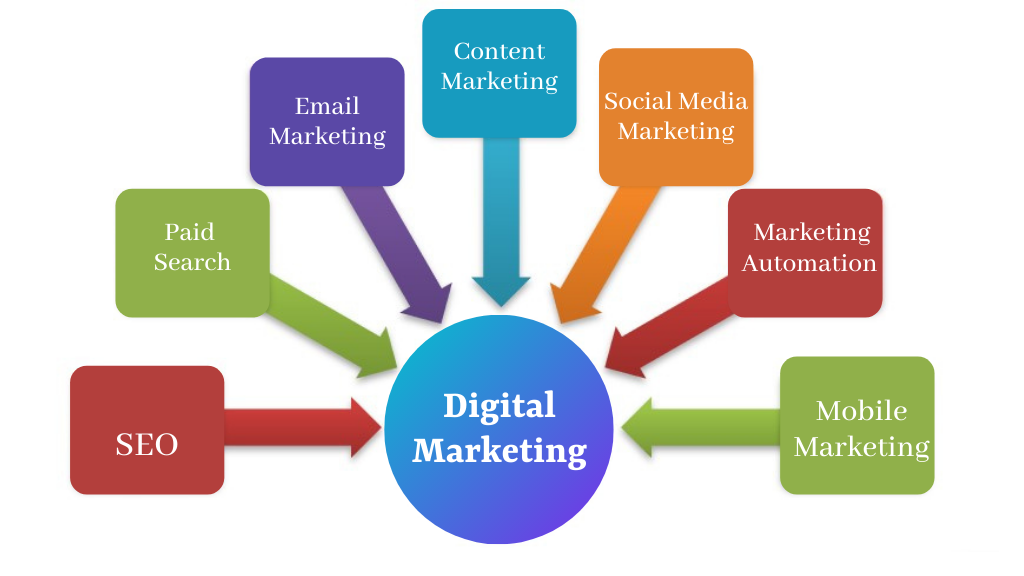
Why digital marketing is important for business? Once upon a time, internet marketing was yet another way to market. It gave rise to a modern type of media in which products and services could be sold. However, in the last few years, the importance of digital marketing has shifted dramatically.
It’s become a crucial part of what a company represents to its customers. It’s no longer sufficient to provide a website or run a scattershot Ads campaign.
Do you have integrated digital marketing tactics that aren’t working for you? As a result, time is working against you. The role of digital marketing is becoming crystal clear as the Internet becomes entwined with everything we do.
Different Types of Digital Marketing:
- Pay-per-click, or PPC, is a marketing approach for attracting paid traffic to your company’s website. Every time their ad is clicked, the advertiser will pay the publisher.
- Social Media Marketing: It includes Facebook, Instagram, and other social media platforms. Businesses use these channels to promote their brands by generating valuable content. It’s also where customers and business owners may communicate.
- SEO: This is a marketing approach that demands companies to concentrate on improving the rating of their websites in order to boost visitors. The higher your website ranks on Google’s search engine results page (SERP), the more opportunities you’ll have to expand your brand.
- Content Marketing: It’s a method that lets organizations to provide helpful material to their customers rather than pitching them on a product. Content marketing focuses on providing value to customers and developing content that will draw them in.
- Video marketing: The most widely used kind of online media. It’s an effective piece of marketing content that will increase the number of people that visit your company. Video marketing can be used in a variety of ways. It can be used to promote a brand or a product, provide behind-the-scenes footage of your company, and share tales and testimonials.
- Email marketing is one of the most conventional kinds of digital marketing with a good return on investment. It entails delivering tailored emails to a certain group of people or prior clients.
Here are some of the reasons why digital marketing will help your company succeed.
Why digital marketing is important for business
1. Reaches People Where They Spend Their Time & Money:

The average Internet user now has at least seven social media accounts. That’s up from three just five years ago. At least once a month, 97 percent of US adults under 65 use social media. The vast majority use it on a daily basis. As a form of customer service, social media is heavily favored.
Despite the fact that companies miss up to 89 percent of consumer messages. Facebook is used by 22% of the world’s population. There are 62 percent of people in the United States who are there.
Every day, 76 percent of Facebook users and 51 percent of Instagram users are active on the platform. When talking about significant events in their lives, 30% of people on social media discuss a particular brand. Millennials are marginally more likely than Gen X to engage with a brand on social media.
The current trend is that the average person spends more than two hours a day on social media. Teenagers work an average of 9 hours a day. From school to work to entertainment to hanging out with friends, social media is ingrained in everything they do. People hang out on social media. Do people, on the other hand, shop there?
One of the top ten reasons people claim they use social media is to purchase goods that have been sold to them. They engage with branded content for about 37% of their social media time. According to 57 percent of Millennials, social media has made advertising more important to them.
A Facebook ad prompted 48 percent of people to make their most recent online purchase. However, only 45% of advertisers believe that their social media activities are paying off. On social media, there are undoubtedly some winners and losers. Getting a profile and posting content every now and then isn’t enough. A social media marketing strategy is needed.
You win big when you know how to optimize your digital marketing ROI. Digital marketing includes social media marketing and advertisements. It is, however, a critical one. We’ll look at a variety of online marketing strategies in this post. This will demonstrate the value of digital marketing to your business.
2. Levels the Playing Field for Small Business:
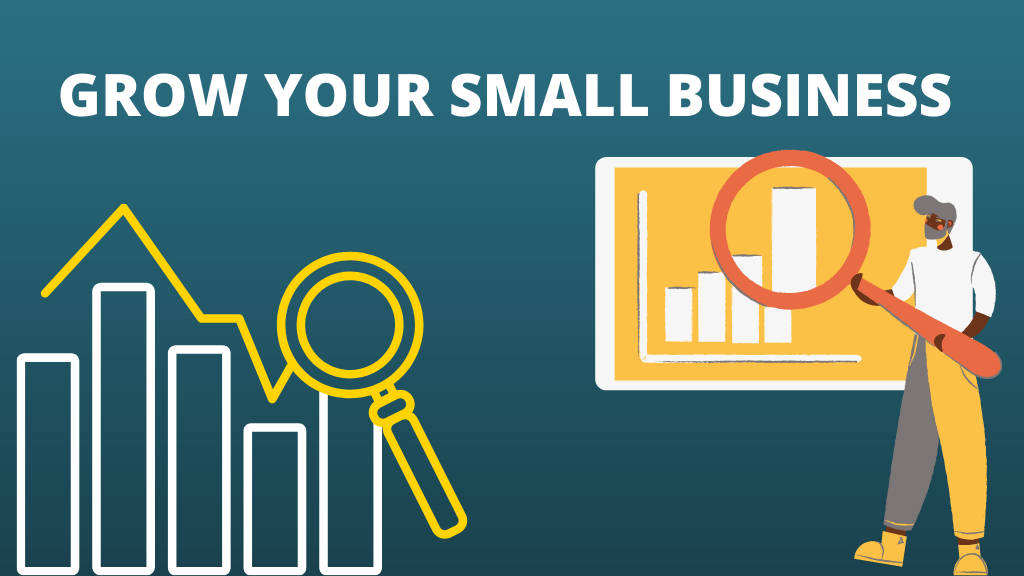
You’ve seen it before. When a large corporation like Walmart comes to town, it wipes out hundreds of small businesses. When Starbucks expands, mom-and-pop coffee and bagel shops close. With Amazon, we’ve seen the online version of this.
It’s difficult to match their brand image or the millions of dollars they spend on publicity and reputation management. That’s where digital marketing shines brightly as a ray of hope for small businesses. It applies to all types of businesses, including brick and mortar, e-commerce, and personal brands.
Smaller companies can now compete on a national level thanks to digital marketing.
By introducing you to a larger audience with a much smaller advertising budget, digital marketing helps you to compete with your competitors.
Digital marketing allows you to compete with your rivals by exposing you to a wider audience with a much lower advertising budget.
It gives companies laser-focused power of where and how they invest their money when handled properly. You make better decisions when you have this level of control and the evidence to back them up. Continue to learn more about the advantages of digital marketing. It becomes increasingly apparent how it levels the playing field.
3. More Targeted:
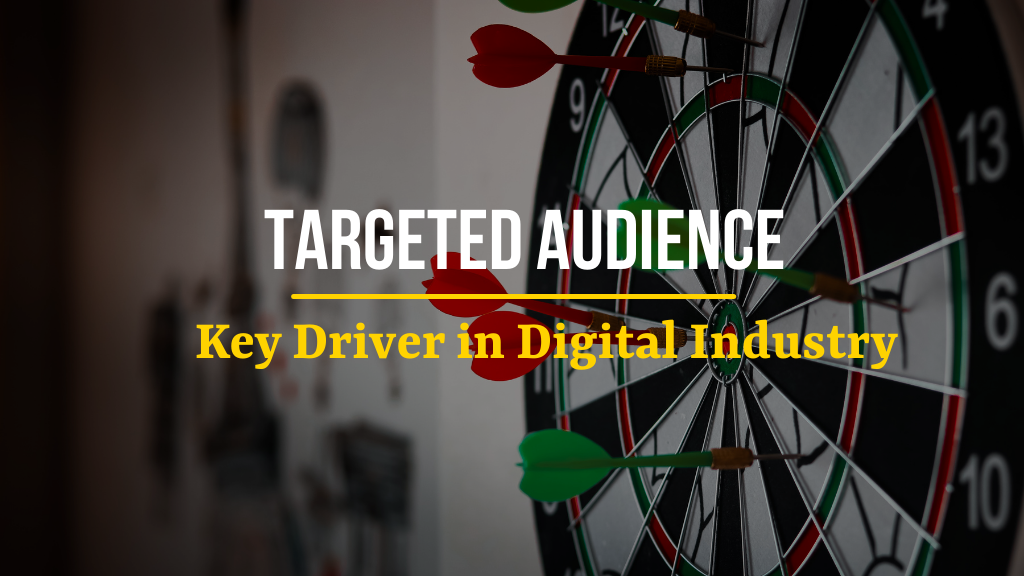
When you run a magazine commercial, for example, you almost certainly target your audience. You already know if the publication is read by your target audience.
You have some influence over the size and placement. Under some publisher rules, you have control over the post. This advertisement has the potential to hit a million or more people. But what percentage of this million is your actual goal? A fashion magazine’s demographic could be 59 percent female between the ages of 35 and 55. They may have a college diploma. And you know they’re interested in the fashion seen in the journal. However, this is a sizable demographic.
One of the benefits of digital marketing is the opportunity to segment large demographic groups. Reduce them to small groups to become hyper-focused on a single type of individual. Who’s that person? It’s the person most likely to purchase what you sell. When you do this level of targeting, you end up with an ad that is highly important to your target market.
It interacts on a level that more general ads can’t because it’s so important. It has the potential to influence decisions because of this relation. You do so without the use of obnoxious conventional marketing tactics. You aren’t running the same ad thousands of times over the course of a month. Or repeatedly interrupting someone’s programme.
So, with digital marketing, what kind of targeting is possible? You’ll most likely be shocked.
Consider the case of search ads. This includes Google AdWords. You target people who are searching on Google with this form of digital marketing.
Search engine results now account for roughly 64% of all website traffic on the Internet.
As much as 80% of traffic comes from search results for companies that have placed a heavy emphasis on SEO (search engine optimization). PPC (pay per click) advertisement, also known as search advertising, allows you to appear at the top of search results. Even if it isn’t where the website will naturally show up.
You can use search ads to reach people who are looking for something specific:
- Challenge
- Goal
- Profession
- Education level
- Buying behavior
- And more
Bid on search queries that reflect these unique goals to accomplish this. To transform the traffic, create advertisements and landing pages around them.
Similarly, social media ads helps you to target a specific audience. Make use of the information they’ve gathered about their users.
Tell Facebook, for example, that your ad can only be shown to people who have engaged in very particular recent activity, have a specific interest, are in a specific area, or have other identifiers.
You don’t spend tens of thousands of dollars on a single advertisement. You can also keep running ads forever. As a result, you can easily change the ad to appeal to different demographics.
For any other type of marketing, you don’t have this degree of influence over who sees your ad.
MUST READ: 10 reasons you need a digital marketing strategy in 2021
4. Can Be Hyper-Personalized:

We’ve just scratched the surface of the value of digital marketing in terms of targeting. You can target almost down to the person level with email marketing, another critical aspect of digital marketing. This is referred to as “segmentation.”
You may get down to the person level in some situations. This is referred to as “personalization” by marketers. Consumers prefer businesses to communicate with them via email 72 percent of the time. This gives customers a sense of power, making them more likely to sign up for your newsletters and make purchases.
They can simply unsubscribe if they don’t like what you give them. When you give them highly relevant material, however, they stay on your list and buy from you again and again. You can see how a repeat lifetime customer plays a role in the importance of digital marketing. There are simple programmes that will allow you to automatically add a person’s name or other information to an email.
But we’re talking about a much more mature strategy that has shown the ability to deliver results for our clients, as shown by the changes shown in the graph below. Email segmentation, automation, and personalization are all examples of email segmentation. You collect data about each email subscriber using segmentation. You use this information to segment the list based on those characteristics or habits discovered through analytics.
Send content that is most applicable to each segment to each segment once it has been divided.
You don’t give it to them if it isn’t necessary. And you can reach more people by making small adjustments to a piece of content to make it more applicable to a particular segment. Automation enables you to submit the content at the most opportune moment to achieve the desired outcome. It eliminates the monotony of the operation. Your data collection process helps you figure out what the best time is. This time might be right now.
It may be a certain time of day. It could be sending one message before another. Finally, there’s the element of personalization. On a personal level, you recognize an individual. Since you know their purchasing experience, you can recommend the right items to them.
You remember them from their recent visit to your website, where they abandoned their shopping cart. You address them by their first names. They get the impression that you value their uniqueness. Although these are three distinct objects, when they are combined, they produce results.
Power of Segmentation, Automation, and Personalization:
Subscribers are 14 percent more likely to open segmented emails, according to MailChimp’s comprehensive results.
They’re 101 percent more likely to click on an email’s call to action. Bounce concentrations are reduced by 5% with segmentation. In email marketing, that’s a lot. It lowers the rate of unsubscription by around 10%. But what about income and sales? Segmentation appears to be a time-consuming process. Is there a return on investment to justify it?
The Aberdeen Research Firm discovered that segmentation increases conversion rates by 10%. Not only are conversion rates higher, but they’re still higher. People who receive segmented emails are more likely to spend more. Thanks to segmentation, marketers saw a 760 percent rise in sales. Businesses who use automation to deliver these emails at the right time see a 50 percent rise in conversion rates. Automated emails have a 70% higher open rate and a 50% higher click-through rate than manual emails.
Businesses that use automation are 133 percent more likely to send out highly relevant content, according to a survey. In a traditional email campaign, the segmented component of the campaign generates 75% of the revenue. The remainder is derived from general emails. This significance is what generates these kinds of outcomes, demonstrating the value of digital marketing to a business. 81 percent of people who receive a personalised email based on previous purchases make another order.
Segmentation and automation, on the other hand, aren’t something that any small company can do on their own. These do necessitate an investment in advanced tools that automate much of the tedious, routine, and time-consuming job. These programmes are needed for successful segmentation to take place. However, they are frequently prohibitively expensive for a small company.
Working with a digital marketing firm has yet another advantage. It will cover the costs while allowing you to take advantage of these cutting-edge technologies. Businesses that excel are increasingly relying on segmentation, automation, and personalization to achieve their goals.
5. More Advanced Analytics

What do you really know about the effectiveness of a television commercial? If you do any research, you can decide the best times for the ad to air and the best frequency. To delve deeper into the results, you might form a focus group.
However, you usually only know its scope based on the organisation and whether it improved buzz, revenue, or fulfilled another marketing objective.
Let’s compare the relevance of digital marketing to that of traditional marketing.
You will learn the following things about your advertising and users thanks to digital marketing:
- Whether or not they saw it. You don’t know much about TV commercials. They could have been in the kitchen or the TV could have been turned off.
- Whether or not they communicated with it
- If they enjoyed it,
- If they lingered on it, it would be a waste of time.
- If they told a friend about it,
- If it prompted you to take another action,
- If it resulted in a sale later on, it was a win-win situation (this is important when deciding how to best spend money)
You also hear a lot more about the people who are responding to the advertisement:
- Who is most interested in your advertisements?
- What are their characteristics?
- What causes them to be more likely to act?
- Who is the most straightforward to convert?
- Who spends the most?
- What do they do on the internet?
- What search words do they use to locate you on the internet?
- Which websites do they go to before they come to yours?
With free analytics tools like Google Analytics, you can keep track of all of this. You can also use paid software to gain even more insight. Use what you’ve learned to cut costs in areas where you’re not getting a return on your investment. Where you get the best results, increase your spending and efforts.
To improve your performance, continue to streamline your campaigns. You would also want to spend money on conventional ads. Many companies want to have a diverse marketing strategy. In that case, the value of digital marketing is the amount of information you gain about your consumers that you can apply to other marketing strategies.
6. Easy to Scale & Adapt
To get traffic flowing, as with any marketing, an initial investment is needed. When you see how easy it is to scale and change as your company expands, the value of digital marketing for small businesses becomes very evident. You may set a regular budget for social media promotions, display advertising, and search ads, for example.
You already know how far the campaign would set you back. Now you’re starting to see some incredible results. To keep an ad going, you don’t have to go in and renegotiate an ad spot. Your ad will continue to run indefinitely. You simply increase your daily spend and profits as you continue to transform the traffic. It’s just as simple to scale back if you received a large order from a client and need to avoid being backlogged.

You don’t have to wait for your ad deal to expire if anything isn’t working in your marketing. You don’t have to start from the beginning. You’ve got the upper hand. Simply make the minor adjustment and re-launch the ad. The value of digital marketing lies in the ability to obtain immediate results. Analyze data and make adjustments quickly to cut down on ad waste and revenue loss.
This raises the question of how affordable digital marketing can be for a small company.
MUST READ: Top 10 of the best marketing strategies.
7. Best ROI:
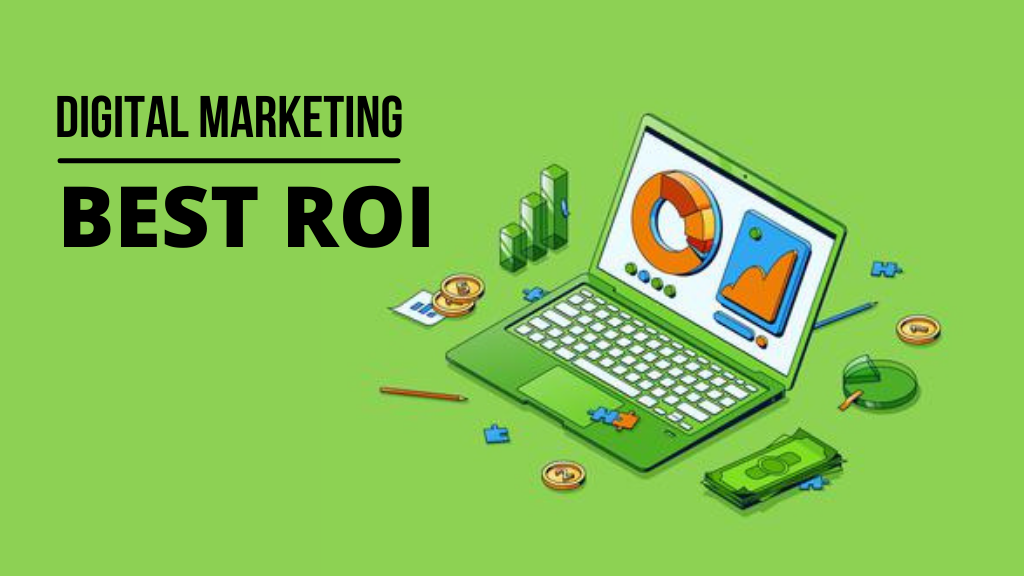
Email marketing has the highest return on investment of any marketing strategy…period. It has a 3800 percent return potential. For every $1 you spend, you’ll earn $38 in revenue. Around 20% of businesses see a return on investment of $70 for every $1 invested. Email marketing is a powerful conversion tool. However, you will need to find a way to develop your email list of high-quality subscribers.
Then submit highly appropriate content to the inbox of a subscriber. Most of the time, this is achieved by combining social media marketing and content marketing. Most of the time, this is achieved by combining social media marketing and content marketing.
These marketing strategies, on the other hand, have a very high return on investment. Content marketing can produce 3X the number of leads for just 62% of the cost of conventional marketing. Of course, we’re not just talking about website traffic when we say “lead.”
There are people who are very likely to purchase your goods and become loyal customers if the partnership is nurtured properly. The return on investment from social media can be indirect at times.
According to a Forbes survey, businesses that use social media outsell businesses that don’t use it by 78 percent. According to IBM, a lead generated via social media is 7X more likely to convert into a paying customer.
You’ll spend less money trying to convert people who will never become paying customers if they’re more likely to convert. As a small business owner, cost-effectiveness is paramount. You must be able to extend the dollars as your company expands. Every dollar you spend is important. You must be certain that it will yield a profit.
That is why digital marketing is so important for small businesses.
8. Aligns with How People Today Shop
Online reviews are considered an essential part of the purchasing decision by 88 percent of people.
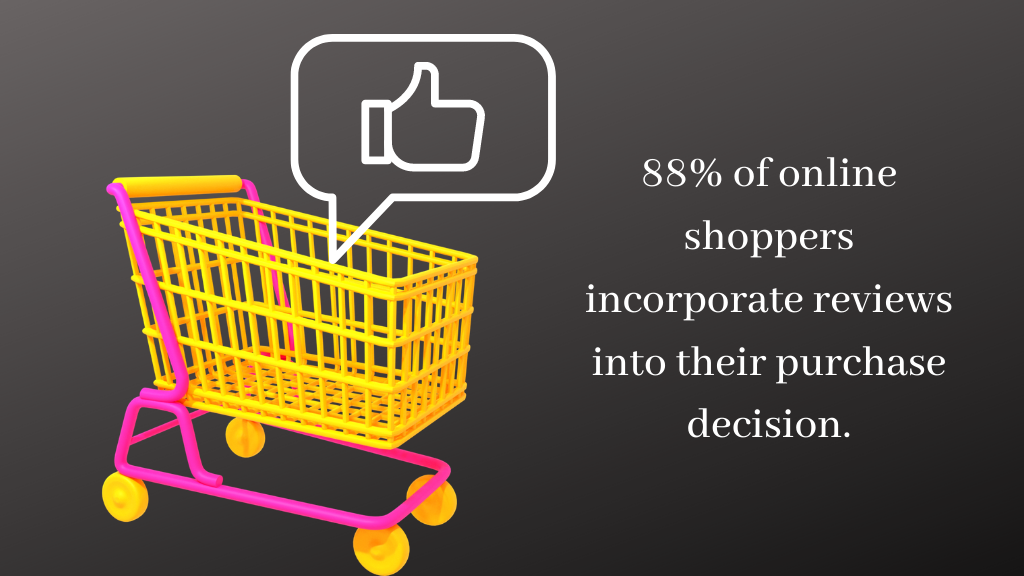
After reading a positive review, 23% of people will come to your company.
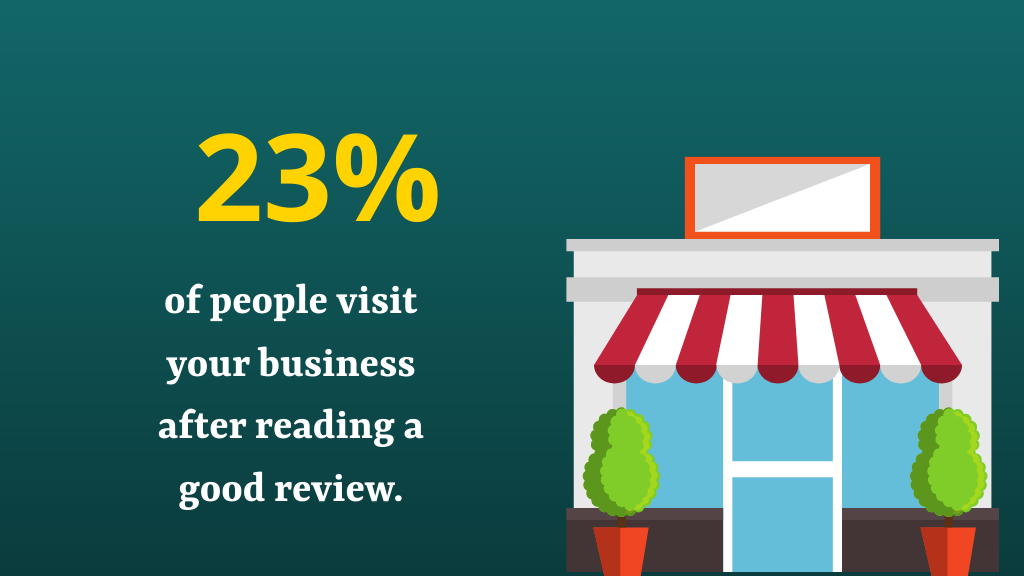
Every week, the average American spends more than 24 hours online. Every day, 8 billion videos are viewed on Facebook, the majority of which are from companies. In reality, most customers nowadays choose to search for goods, services, or anything else they need on the internet. The majority of them are also impatient and can only look at the first five pages of search results. As a result, having an online presence isn’t enough.
You must be one step ahead of your rivals. This is how SEO benefits your business.
If your website is well-optimized, users will be able to find it easily when searching for a keyword related to your brand. The modern sales process begins online, and it includes everything from restaurants to physicians to bookkeeping software to goods.
It might be something a friend posted on social media or the product of a Google search. It all begins with an email newsletter they got in their inbox.
The easier it is to develop your company, the more connected it is with the online experience of your customers. To be important to the vast majority of consumers, you must have an online presence. The value of digital marketing is that it establishes a presence for you.
How to Be Relevant Online
To be important in today’s online world, you must:
- In today’s online world, you must be able to:
- Invest in SEO to ensure that you show up in search results for specific keywords.
- Have at least one active social media profile where customers can interact with you.
- AdWords, Instagram, and Promoted Tweets are examples of paid ads. It’s nearly impossible to be found online without some kind of paying advertising.
- Management of one’s reputation. Be aware of what others are thinking about you. Solicit more feedback.
When asked to write a review, the majority of people write a good one. Only dissatisfied people write reviews when they aren’t asked. Touchpoints that are all linked. All of your online accounts can communicate with one another.
If you have a brick-and-mortar store, engage your target customers both online and in person.
9. How People Prefer that Businesses Reach Them:
Traditional advertisement has worn out its welcome. They discovered they have an option. An ad blocker is used by 20% of 16 to 34-year-olds online. People generally avoid websites that greet them with obnoxious invitations and advertisements when they first arrive.
They are opting for media that does not need them to watch commercials. It seems to be cliched. People, on the other hand, seek recognition. They want someone to give them knowledge that will enable them to make educated decisions.
They want to buy from companies that share their values. They want you to participate in their discussions. The beauty of digital marketing is that it allows you to market to people in ways that demonstrate your regard for them as people.
10. Integrates Marketing with Mobile Technology
According to IBM report, mobile transactions are growing at a blistering rate of 35 percent year over year. But it’s not just the buying and selling that’s taking place on mobile. People are constantly using their smartphones as virtual reality overlays on businesses.
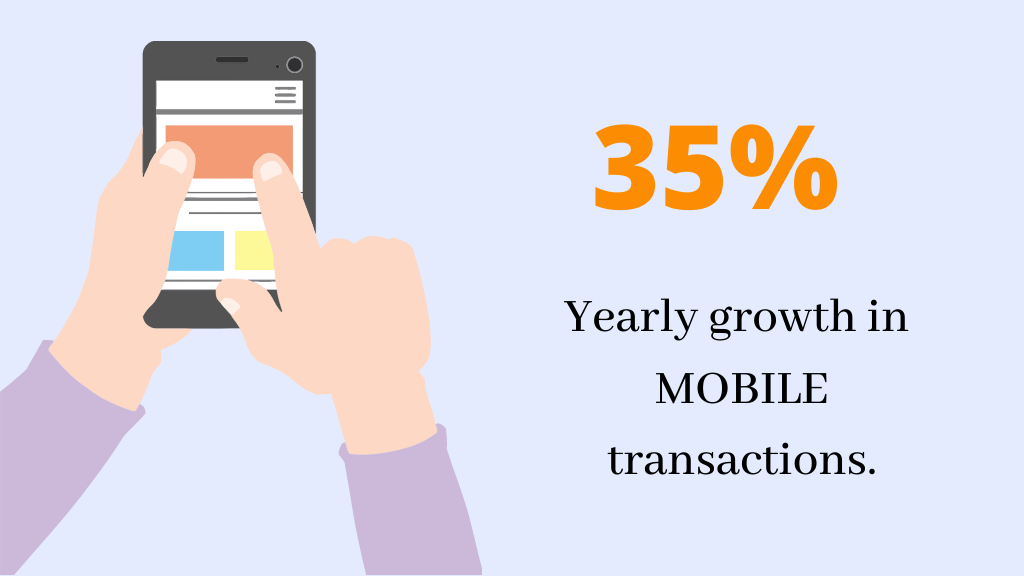
While in your shop, they’re looking at reviews and product details. They may be placing an order online or talking with customer service while on the road.
A selfie they take in your shop becomes a chance for you to promote yourself. Before they leave your office, they can write a summary for you. Make the mobile experience as seamless as possible with the physical experience. The more you do, the more your company will be able to capitalise on these opportunities.
When they walk down the aisle, send an alert to let them know what they’re interested in is on sale. Use their phone to monitor their physical store activity (with permission, of course). Send more important deals with it. When geo-location indicates that they are in the city, invite them to visit the shop.
11. Your Competitors are doing it:

It’s something your competitors are doing. They’re also making a name for themselves online and increasing traffic to their website.
You can observe and note what your competitors are doing. You may use what you’ve learned to develop a more effective plan for attracting more visitors to your website than your competition.
Marketing experts employ digital marketing tools for their online marketing platforms, which are available online. Some of these tools will aid businesses in monitoring on their competitors. You’ll learn about all of the techniques they’re doing to promote their brand.
12. Cost-effective & fast:
Traditional marketing is more expensive than digital marketing. Spending money on traditional advertising isn’t enough if you’re a small firm with limited resources. Even the necessity of printing flyers for your company is costly and time-consuming.
But with digital marketing, your small business can start the process immediately. You only need to conduct some studies and then try any of the types of digital marketing mentioned above.
Conclusion:
As you can see, digital marketing is critical to today’s organization’s existence. If you want your business to grow, you must expose your brand to a larger audience. Digital marketing may appear intimidating at first, but once you learn more about it, you’ll find that it has a lot of potential to help your business grow.
You comprehend the significance of digital marketing. But that doesn’t make it any easier to put plans in place that will give you the results you want. Find out how we can assist you in using digital marketing to expand your company. To schedule a consultation, please contact us.
Where digital marketing is used?

Any firm can benefit from digital marketing. We’ve utilized digital marketing to help businesses of all sizes expand, from mom-and-pop shops to internationally recognized colleges and beyond, at Disruptive. That is the allure of online advertising. You can use digital marketing to target anyone, anywhere if you know who you want to reach.
However, some organizations will gain more from particular sorts of digital advertising than others. Let’s take a brief look at which techniques work best for businesses that sell to consumers (B2C) versus businesses that sell to businesses (B2B):
Where digital marketing is used?
B2C COMPANIES

Generally speaking, B2C companies have much lower price points than their B2B counterparts. After all, it can be a little hard to sell a $150,000 drill bit (believe me, they exist) to a harried mom. But $10 for a pair of children’s pants? That’s a relatively simple sell.
The good news is that B2C businesses don’t require large sales teams or intricate marketing funnels because they aren’t trying to offer extremely expensive goods or services. They only need to get their products or services in front of the right audience with the right messaging, and the rest will take care of itself.
As a result, most B2C companies’ primary goal is to get people into and through their marketing funnel. If you can get that harried mom onto your children’s clothing website and offer her a great deal, there’s a good chance she’ll buy today. Before you can close a sale, you don’t need a lot of brand awareness or trust.
With this in mind, higher-funnel marketing channels such as social media marketing and paid social advertising can produce excellent results for B2C businesses. These platforms perform an excellent job of putting your company in front of potential customers who would otherwise be unaware of its existence.
Supplementing with other digital marketing methods such as sponsored search or SEO is always a smart idea, but if you only have time to focus on one channel, paid social advertising or social media marketing are excellent choices for B2C.
B2B COMPANIES

Paid search, on the other hand, is a fantastic option for B2B businesses. Most B2B businesses cater to very specific niche audiences, which can be difficult to reach via social media. If you sell $150,000 drill bits, you want to be the first result when someone searches for “diamond-tipped oil drilling bit manufacturer.” Yes, you’ll pay more for your click than with sponsored social advertising, but with a price tag of $150,000, it’s money well spent.
Furthermore, unlike B2C businesses, most B2B businesses have a considerably longer and more complicated sales cycle. Most people don’t come to your website, contact you, and say, “I want one.” If you’re selling a $150,000 drill bit, most people aren’t going to call you and say, “I want one.” As a result, longer-term techniques like content marketing or email marketing are frequently required to complete a transaction.
Of course, the correct mix of digital marketing approaches will vary by industry and business, but simply comparing B2C and B2B should give you an idea of how different strategies can be beneficial for different organisations. Not every method is perfect for every firm, but with a little trial and error, you should be able to figure out which approach is the most profitable for you.
How Do I Get Started?

The good news is that launching a digital marketing campaign is rather simple. The majority of internet ad networks make it simple to sign up and launch your first campaign (it is how they make money, after all). Here are some links to basic guides for a variety of digital marketing techniques:
- Paid search advertising
- Search engine optimization (SEO)
- Paid social media advertising
- Social media marketing
- Conversion rate optimization
- Content marketing
- Email marketing
A guide, on the other hand, isn’t at the heart of every successful digital marketing strategy. Regardless of which digital marketing tactics you utilise, there are four questions you must address before you begin:
1. HOW MUCH DO YOU NEED TO MAKE?
To determine how much you should spend on digital marketing, you must first define your objectives. Depending on whether your final aim is to drive clicks, conversions, or leads, sales, income, or a specific return-on-investment, how you approach digital marketing might vary quite a little (ROI).
ALSO READ: How technology supports digital marketing?
When it comes down to it, the ultimate goal of every marketing campaign should be return on investment. After all, why are you promoting online if your digital marketing spend isn’t generating profitable cash for your company?
Clicks and even conversions are nice, but your organisation does not profit from them (in fact, you spend money on them). Sales are how it makes money.
With that in mind, the first thing you need to figure out before deciding on a digital marketing budget is how much income you intend to generate. Once you know that, you may use it to calculate how much advertising you’ll need to reach your income target.
2. WHO ARE YOU MARKETING TO?
After you’ve determined how much money you want to make from digital marketing, you’ll need to figure out who you’re going to market to. This is crucial since different customer profiles necessitate various marketing strategies. Even more crucially, distinct customer personas morph into different buyer types.
So, what’s this? You can’t design a successful digital marketing plan if you don’t understand your buyer profiles!
If you have a sales team, chatting to them might be one of the quickest methods to put up a good buyer persona. After all, they’re the ones who have the most contact with your customers, right?
Even talking to your sales team and conducting some research isn’t enough to get to the degree of depth you’ll need to create an effective digital marketing strategy. To accomplish so, you’ll need to pick up the phone and dial your genuine customers’ numbers.
Inquire as to how they came across you, why they converted, and what persuaded them to pay you. This data will provide you with a wealth of information about your marketing and sales processes, which you can use to improve the effectiveness of your advertising and determine your marketing budget.
3. WHAT ARE YOUR CUSTOMERS WORTH?
Buyer personas are commonly thought of as a useful tool for developing an effective marketing plan. Buyer personas are useful for this, but they’re also a crucial component of developing a successful digital marketing strategy.
ALSO READ: How to Use LSI Keywords to Boost SEO Traffic?
4. HOW MUCH DO YOU NEED TO SPEND TO REACH YOUR GOALS?
Things are relatively straightforward at this point. Simply enter your CAC, average purchase order amount, and average number of purchases (or, if you have a subscription model, the average lifespan of each customer persona) into this calculator!
How is Digital Marketing Different on Mobile?

As you might expect, mobile digital marketing differs significantly from desktop digital marketing. These distinctions are particularly essential these days, because smartphones are becoming the most common device used to engage with the internet.
The change from desktop to mobile has had a significant impact on digital marketing, with 60 percent of internet activity occurring on mobile devices.
To offer a consistent experience across mobile and desktop, Google Advertisements removed sidebar ads from their results pages last year. On desktop, Facebook Advertisements still shows sidebar ads, but on mobile, it only shows in-stream ads. On mobile, shorter blog posts outperform lengthier blog posts… The list of distinctions goes on and on.
To be honest, in today’s digital marketing landscape, it’s a smart idea to presume that your marketing will be seen on mobile first, and then adjust your plan for desktop as needed.
It’s crucial to consider your site and landing page experience in addition to optimising your ads for mobile. Sure, your website may look great on a desktop, but if it’s tough to access on a mobile device, you’ll be alienating a large portion of your audience.
At the very least, you should have a mobile-responsive website, but ideally, your mobile experience should be tailored to make it as simple as possible (not just an adapted version of your desktop experience).
Digital marketing is now predominantly a mobile experience, whether most advertisers understand it or not. The good news is that you don’t have to worry about recreating the wheel if you’re new to digital marketing. You can begin by creating interesting mobile ads and then adapt them as needed for desktop.
DIGITAL MARKETING ASSETS

A digital marketing asset can be almost anything. It simply needs to be an internet marketing tool. However, many consumers are unaware of the wealth of digital marketing resources available to them. Here are a couple such examples:
- Your website
- Branded assets (logos, icons, acronyms, etc)
- Content for video (video ads, product demos, etc)
- Various images (infographics, product shots, company photos, etc)
- Content that is written (blog posts, eBooks, product descriptions, testimonials, etc)
- Online products or tools (SaaS, calculators, interactive content, etc)
- Reviews
- Social media pages
As you may expect, this list only touches the surface. The majority of digital marketing assets will fit into one of these categories, but as intelligent marketers continue to come up with new ways to contact clients online, the list will continue to increase!
Conclusion
Marketing in the digital age is the way of the future. You can track the results of your digital marketing efforts with incredible accuracy, which means it’s easy to see which strategies are producing profitable results and which ones need some work, in addition to all of the other advantages we’ve discussed throughout this article.
In case this post has persuaded you that you need digital marketing (or that you need to step up your digital marketing game), but you’d like some assistance determining the best method, please let us know here or in the comments! We like assisting businesses in their digital marketing efforts.
Is there anything in this article that I’m missing? Do you have any more digital marketing questions? Let me know what you think in the comments!